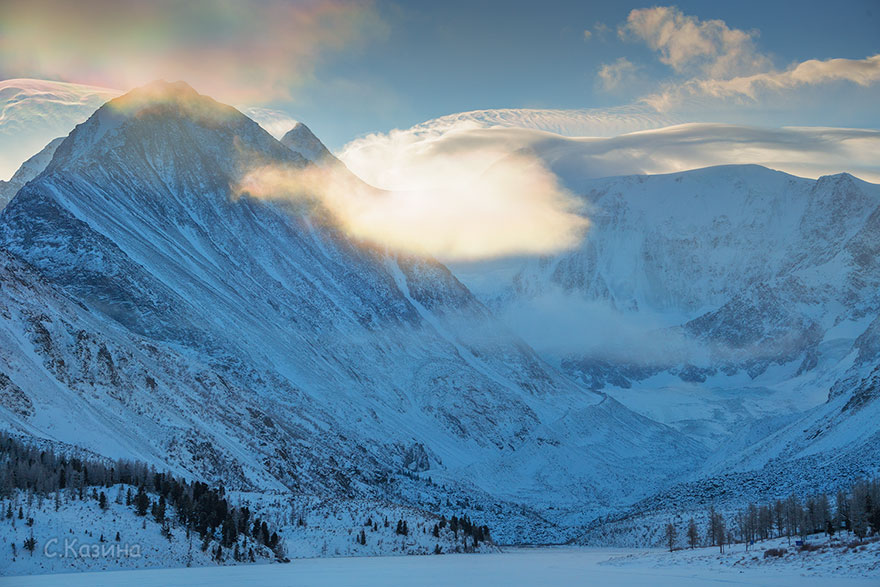Roughly 20 years ago, Svetlana Kazina quit her job in the city to follow her true calling — nature. She and her two kids moved to a wooden hut in the mountain village of Uznezya in Russia’s Altai Krai region, near the border with Kazakhstan. Their new home was built almost seven decades ago. It had no heating, no toilet, no running water. But it had what the city couldn’t offer them. Peace, harmony, and beautiful nature.
As time went by, the mountains have become Svetlana’s natural habitat. However, she’s not just gazing at them herself but also sharing the breathtaking views with the rest of us through photography as well.
Svetlana’s recent trip to Siberia’s highest peak has produced particularly stunning pictures. While exploring the areas around the Belukha mountain, she captured a colorful optical phenomenon called cloud iridescence, caused by small water droplets or ice crystals individually scattering light thus creating the rainbow colors.

“I often visit the Belukha mountain just because I really love it and the whole Katun ridge,” Svetlana told Bored Panda.
Even the long trip doesn’t stop her from enjoying the sight. “[From where I live,] it’s a one-day trip by car to a nearby village, after which the road ends. Then, two days on foot or on horseback to the Ak-Kem valley and one more day to the foot of the Belukha mountain.”
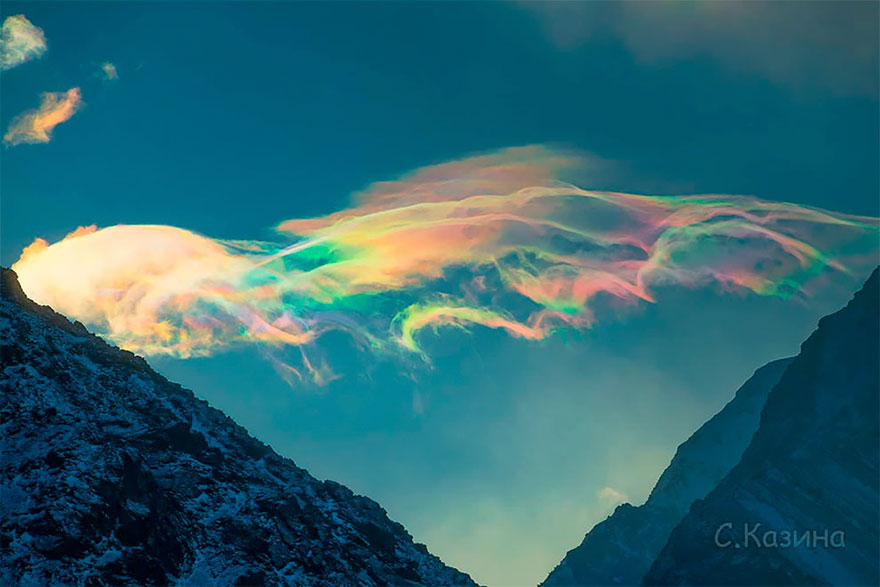
“This mountain is not just the highest peak in Siberia, but a beautiful natural monument and shrine of the Altai Mountains, too. I love it for its unusual beauty and power.”
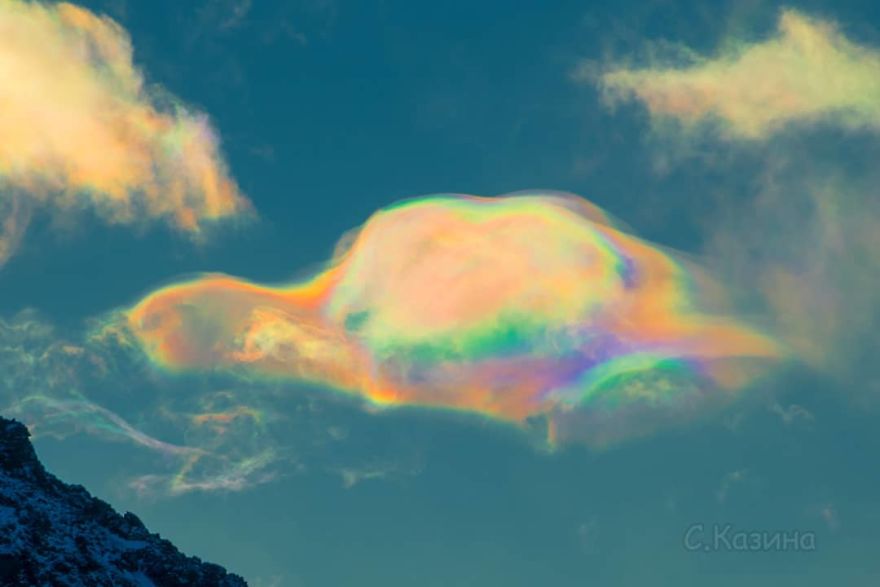
There are two meteorological stations in the area. The Akkem weather station (located at 2050m [6726 feet]) and the Karaturek weather station (2600m [8530 feet]). During her stay, Svetlana enjoyed the company of meteorologists, rescuers, and helicopter pilots. The photoshoot began when she suddenly noticed that the cloud formation which came close to the Sun became brighter.
“I captured the iridescent clouds on a frosty winter morning, standing on the frozen Ak-Kem lake,” the woman said. “Iridescence is a fairly common phenomenon in our mountains. When taking these cloud photos, I used a polarizing filter to make the formations even clearer.”
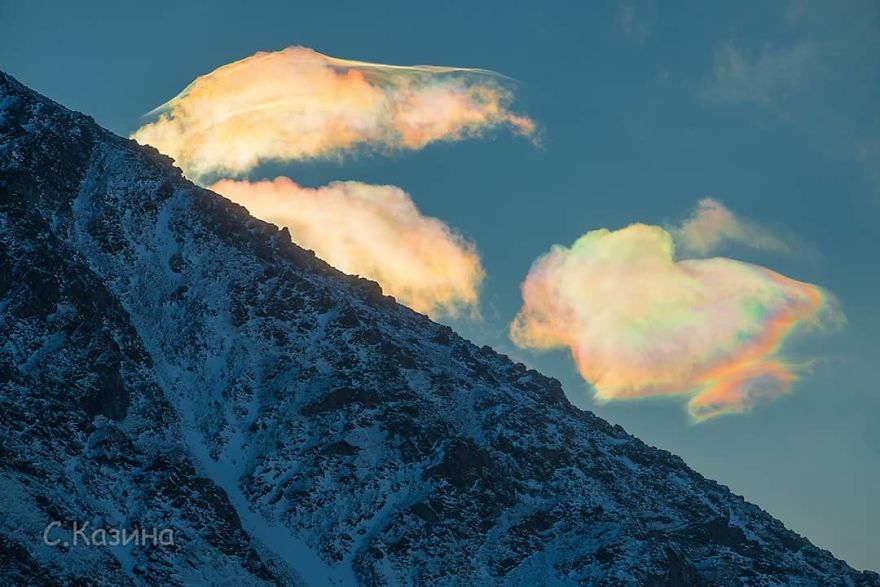
Svetlana had to be quick because the natural light prism show didn’t last long. “Firstly, the sun rose higher and higher, and it was getting too bright. Secondly, I had to fly to the second weather station.”
However, her trusty Nikon D850 paired with the Nikkor 28-300 lens did an excellent job of catching this rare type of clouds.
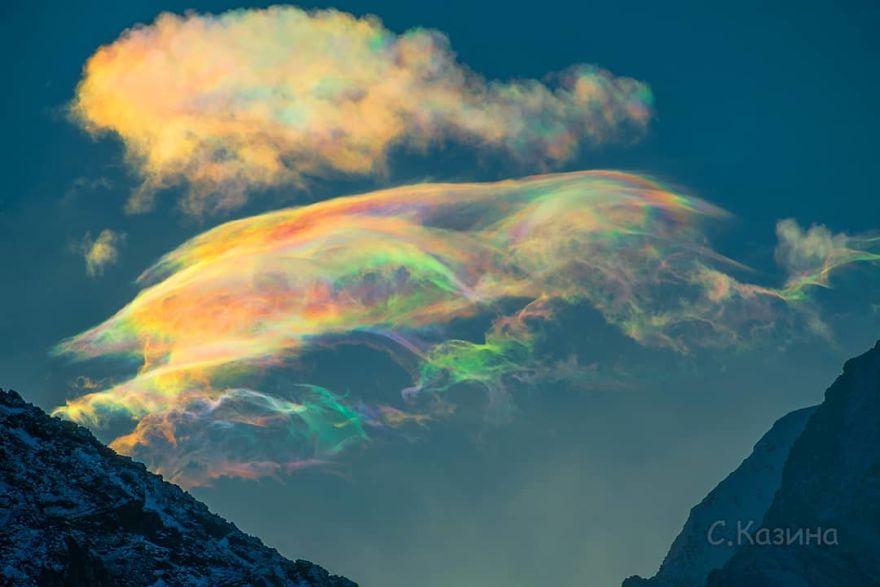
Even though Svetlana made the iridescent cloud shapes more vivid in the photos than they really were, they are also visible to the naked eye. The problem is that we can’t see such bright colors when the clouds get really close to the Sun.
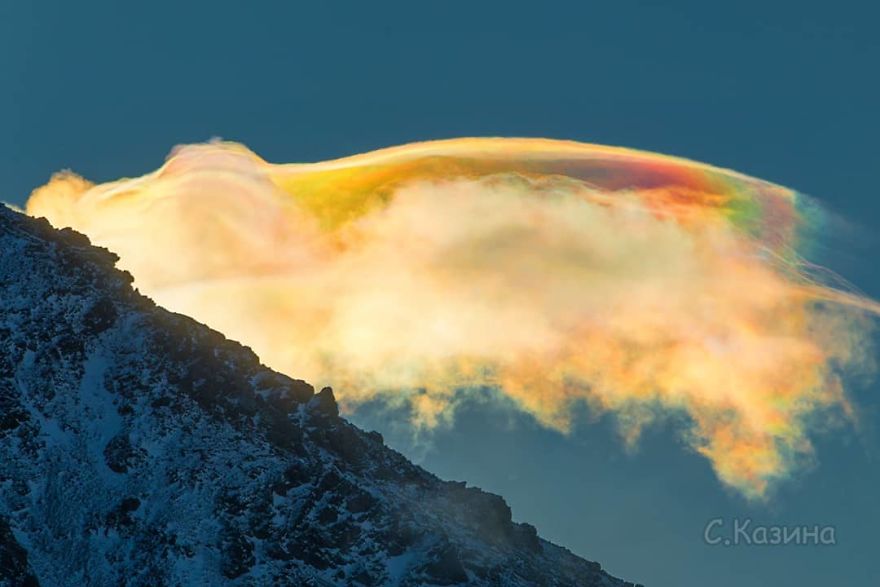
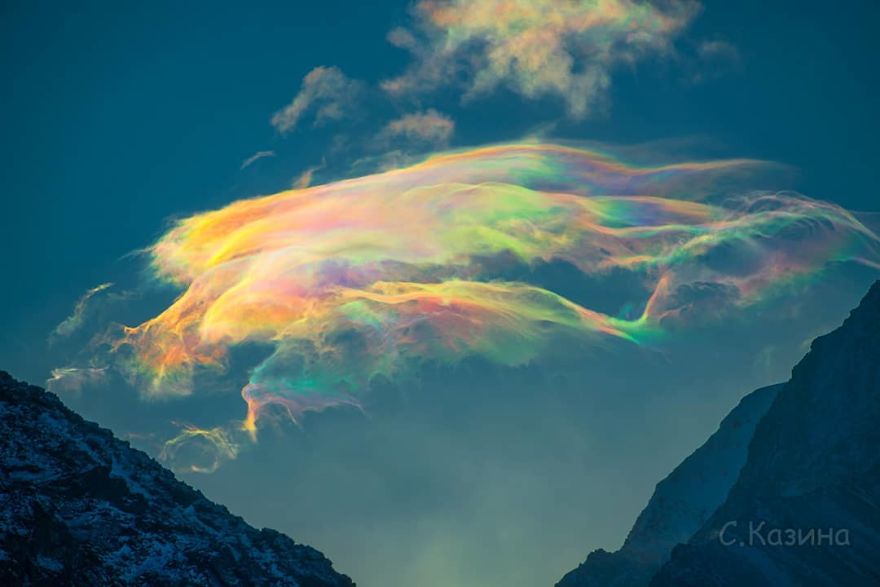
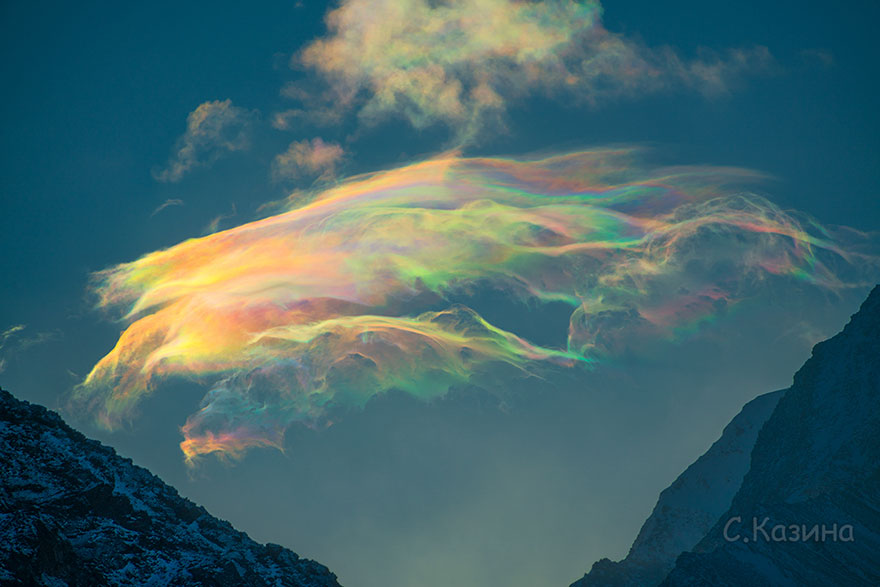
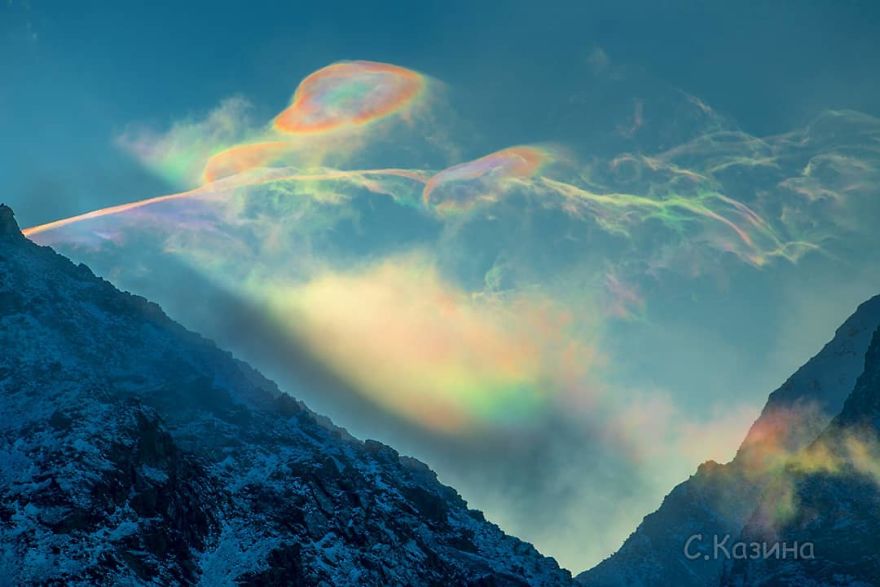
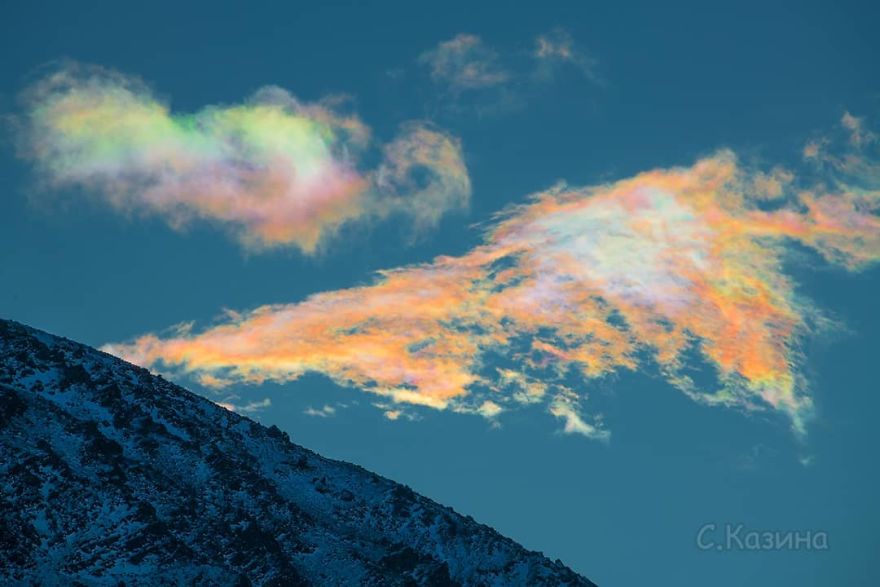
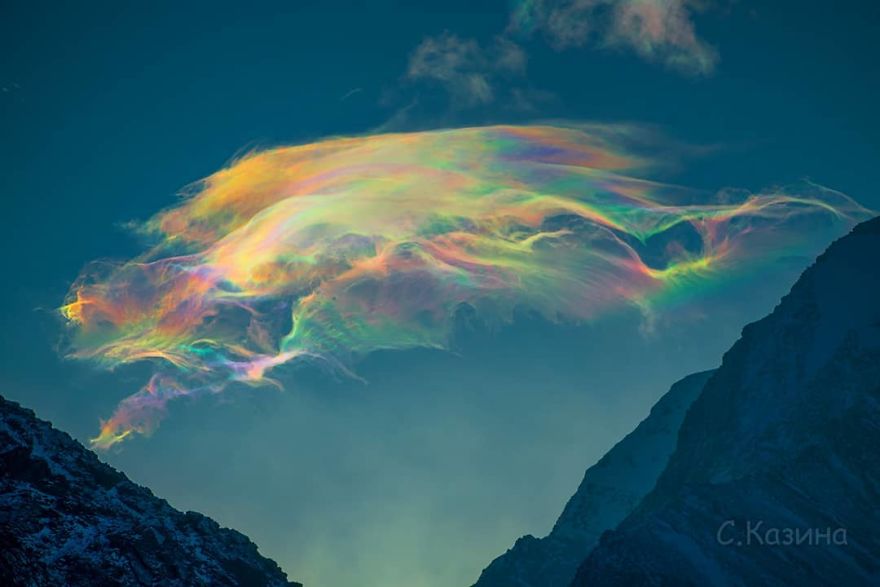
After she put down her camera, Svetlana took one last shot with her phone. “[It was] an amazingly big mother-of-pearl cloud which was colorful for roughly an hour. The colors grew in intensity as the sun sank lower behind the horizon.”
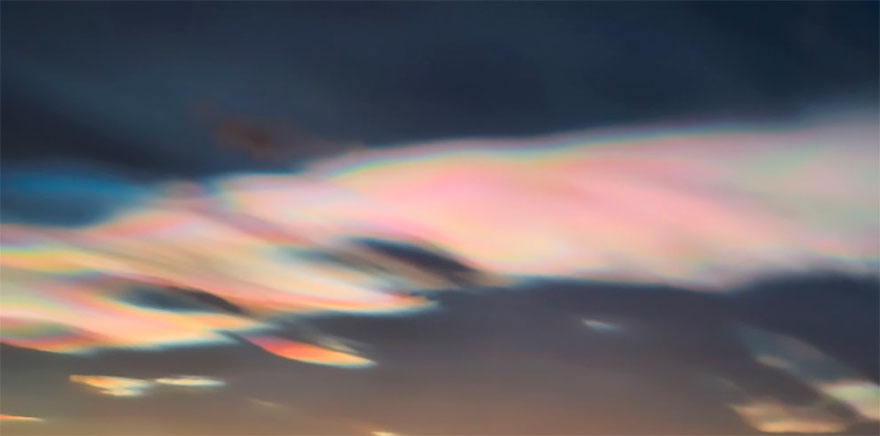
Svetlana likes to watch both the usual and unusual natural phenomena in nature. “I photograph a lot when I’m in the mountains. Therefore, I even created separate albums for the fluffy clouds, sun, and moon on my social media accounts. Most notably, on Facebook and VKontakte.”
But you can also follow her on Instagram!

Here’s the beautiful Belukha mountain in all its glory
